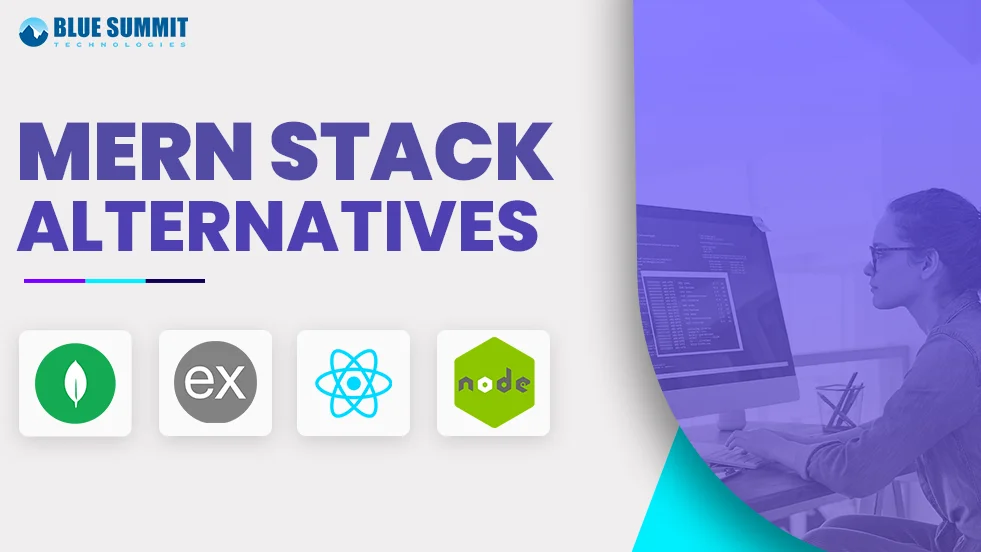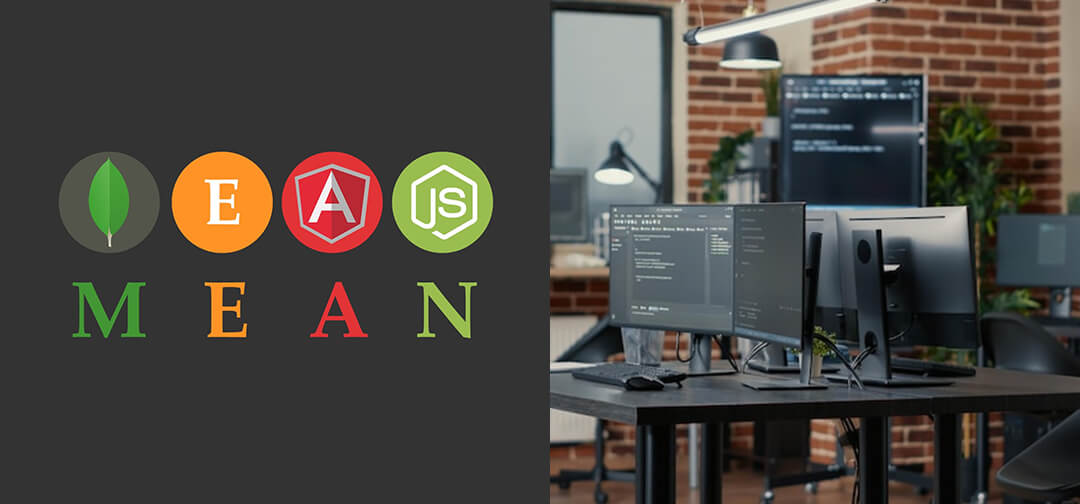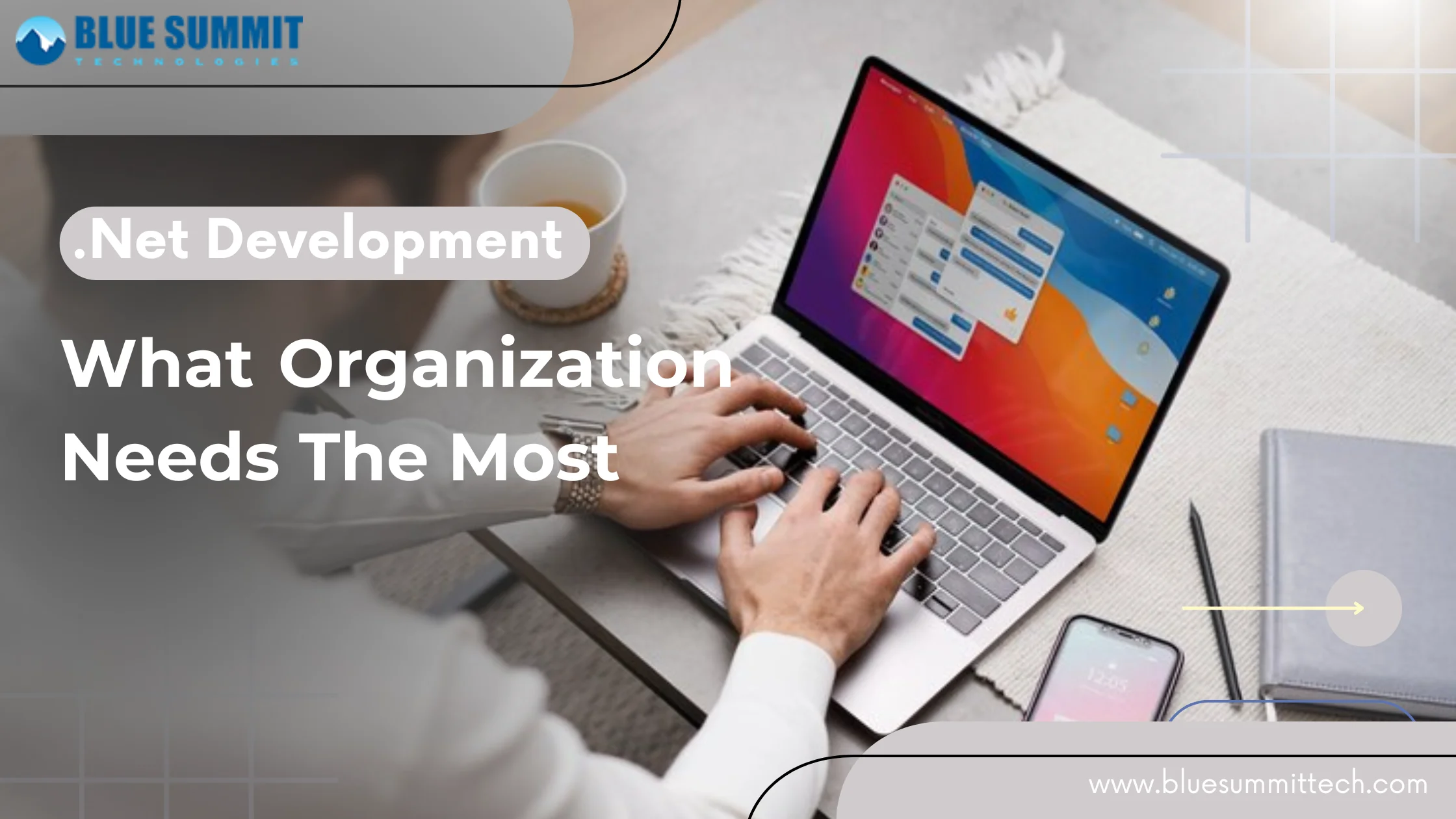
Posted on Saturday, Nov 11th, 2023
Exploring the Best Stacks for Web Development
The MERN stack, consisting of MongoDB, Express.js, React, and Node.js, has long been one of the best stacks for web development due to its flexibility, scalability, and robustness. However, as the technology landscape continually evolves, developers are exploring MERN stack alternatives to address specific project requirements, leverage new features, and stay at the forefront of web development. In this blog, we'll get to know some of the notable MERN stack alternatives that offer unique advantages and capabilities.
Best stacks for web development: A Brief Overview
The MERN stack's four components—MongoDB, Express.js, React, and Node.js—each play a crucial role in building web applications. However, the ever-growing web development ecosystem presents several alternatives that serve similar purposes while introducing different features and concepts. Let's explore these alternatives.MEAN Stack
MEAN is an acronym for MongoDB, Express.js, Angular, and Node.js. Angular, a powerful front-end framework, replaces React in the MEAN stack. Angular offers a more opinionated structure and a comprehensive set of tools for building dynamic web applications mainly focused for MERN stack app ideas. MEAN stack development is a strong alternative for developers who prefer Angular's architecture and extensive feature set.MERN Alternatives
1. MEVN Stack
MEVN is a variant of the MERN stack that swaps React for Vue.js. Vue.js is known for its simplicity and flexibility, making it a great choice for developers who appreciate an easier learning curve and a versatile component-based framework.2. MERNG Stack
The MERNG stack includes MongoDB, Express.js, React, Node.js, and GraphQL. GraphQL, a query language for APIs, replaces traditional RESTful APIs. This stack provides enhanced data-fetching capabilities, real-time data updates, and a more efficient way to request data from the server.3. MEANie Stack
The MEANie stack combines MongoDB, Express.js, Angular, and Firebase. Firebase, a popular backend-as-a-service (BaaS) platform, offers real-time database functionality, authentication services, and serverless functions. The MEANie stack is an excellent choice for rapid development and simplified backend management.Exploring MEAN Stack
Advantages of the MEAN Stack
The MEAN stack presents a compelling alternative to the MERN stack, with Angular as its front-end framework. Here are some advantages of using the MEAN stack:1. Full-Stack JavaScript
MEAN maintains the consistency of using JavaScript across the entire application, from the server to the client. This simplifies the development process and allows for code reuse.2. Angular's Extensive Feature Set
Angular provides a comprehensive toolkit for building web applications, including strong support for two-way data binding, dependency injection, and a well-structured component architecture.3. Opinionated Structure
Angular follows a more opinionated architecture, which can be advantageous for large teams or projects where a predefined structure and best practices are essential.4. Robust Ecosystem
The MEAN stack benefits from a wide range of tools and libraries for testing, deployment, and performance optimization.Disadvantages of the MEAN Stack
While the MEAN stack offers several advantages, it also comes with its set of challenges:1. Steeper Learning Curve
Angular's opinionated nature can lead to a steeper learning curve, especially for developers transitioning from React.2. Code Complexity
The MEAN stack's structure and extensive features can lead to more complex code, which may not be necessary for simpler projects.3. Heavier Bundle Size
Angular applications tend to have larger bundle sizes, which can affect page load times, particularly for mobile users.4. Limited Server-Side Rendering (SSR)
Angular's support for server-side rendering is not as mature as React's, which can be a limitation for SEO and initial page load times.Exploring MEVN Stack
Advantages of the MEVN Stack
The MEVN stack, which replaces React with Vue.js, offers a unique set of advantages:1. Simplicity and Ease of Learning
Vue.js is known for its simplicity and gradual learning curve, making it an excellent choice for beginners and those who prefer an uncomplicated framework.2. Flexible and Versatile
Vue.js provides a flexible and versatile component-based architecture, allowing developers to integrate it into existing projects or use it as a progressive framework.3. Performance
Vue.js is lightweight and offers high performance, resulting in faster load times and smoother user experiences.4. Active and Supportive Community
Vue.js has a thriving community and ecosystem, which ensures ongoing support and a wide range of libraries and extensions.Disadvantages of the MEVN Stack
Despite its advantages, the MEVN stack has some limitations:1. Smaller Ecosystem
While Vue.js has a growing ecosystem, it may not have as many resources, third-party libraries, and extensions as React.2. Less Opinionated
Vue.js is less opinionated than Angular, which can lead to a lack of consistency and best practices in larger teams or projects without strong guidance.3. Transitioning Challenges
For developers accustomed to React, transitioning to Vue.js may require an adjustment period.4. Server-Side Rendering (SSR) Complexity
While Vue.js supports server-side rendering, it can be more complex to set up compared to React.Exploring MERNG Stack
Advantages of the MERNG Stack
The MERNG stack, which introduces GraphQL into the mix, offers several advantages:1. Efficient Data Fetching
GraphQL allows clients to request exactly the data they need, reducing over-fetching and under-fetching of data.2. Real-Time Data
GraphQL subscriptions enable real-time data updates, making it well-suited for applications with real-time features like chat or notifications.3. Single Endpoint
With GraphQL, there is a single endpoint for data retrieval, simplifying the API structure and reducing the need for multiple RESTful endpoints.4. Strongly Typed Schema
GraphQL's strongly typed schema provides clarity and documentation, making it easier for frontend and backend developers to collaborate.Disadvantages of the MERNG Stack
While the MERNG stack offers unique benefits, it also has some challenges:1. Learning Curve
GraphQL can have a steeper learning curve, especially for developers new to the technology.2. Server Implementation Complexity
Implementing a GraphQL server can be more complex and time-consuming than setting up a traditional RESTful API.3. Tooling and Libraries
While the GraphQL ecosystem is growing, it may not have as many tools and libraries as RESTful APIs.4. Overhead
For simpler projects, the additional features provided by GraphQL may be unnecessary and result in unnecessary overhead.Exploring MEANie Stack
Advantages of the MEANie Stack
The MEANie stack, which combines MongoDB, Express.js, Angular, and Firebase, offers several advantages:1. Real-Time Database
Firebase provides real-time database functionality, enabling instant updates across clients without the need for manual polling.2. Authentication Services
Firebase offers easy-to-implement authentication services, simplifying user management and security.3. Serverless Functions
With Firebase Cloud Functions, developers can implement serverless backend logic without the need to manage servers.4. Rapid Development
The MEANie stack's combination of Angular and Firebase allows for rapid development and prototyping.Disadvantages of the MEANie Stack
The MEANie stack comes with its own set of limitations:1. Vendor Lock-In
Firebase is a Google product, and using it can lead to vendor lock-in, limiting the flexibility to migrate to other platforms in the future.2. Complexity for Larger Projects
For more complex applications, the MEANie stack may not provide the level of control and customization needed.3. Limited Server-Side Logic
Firebase is designed for serverless functions, which may not be suitable for applications requiring extensive server-side logic.4. Data Storage Costs
While Firebase offers a free tier, data storage costs can accumulate as applications scale.Enhances with MERN alternatives?
1. Comprehensive Needs Analysis
Blue Summit begins by conducting a thorough analysis of your project requirements, business goals, and scalability needs.2. Technology Stack Assessment
Leveraging their extensive experience, the team at Blue Summit evaluates various technology stacks, considering factors such as performance, security, scalability, and community support.3. Customized Recommendations
Based on the analysis, Blue Summit provides tailored recommendations for the best web development stacks that align with your project's specific needs and objectives.4. Expert Consultation
Engage in detailed consultations with Blue Summit's experts to discuss the pros and cons of different stacks, ensuring a clear understanding of the implications and benefits of each choice.5. Prototyping and Testing
We assist you in creating prototypes or proofs of concept using the recommended stacks, allowing you to assess their feasibility and performance in a controlled environment.6. Scalability and Future-Proofing
Our team at Blue Summit focuses on selecting stacks that not only meet current requirements but also have the potential to scale with your business and remain relevant in the long term.7. Integration and Migration Planning
If you're transitioning from an existing stack or integrating new technologies, we provide you with detailed plans for a smooth migration process, minimizing disruptions to your operations.8. Continuous Support
We offer ongoing support, ensuring that your chosen stack is optimized and updated as needed. This includes assistance with troubleshooting, performance monitoring, and adapting to evolving industry standards.9. Training and Knowledge Transfer
We provide training sessions for your development team, empowering them with the skills and knowledge needed to work effectively with the chosen technology stack.10. Regular Updates and Reviews
Blue Summit maintains open communication channels, providing regular updates on technological advancements and conducting periodic reviews to ensure that your stack remains aligned with the evolving landscape of web development.Conclusion
Choosing the best stacks for web development is a critical decision that significantly influences the success of your project for mern stack app ideas. Whether you opt for the MERN stack with its powerful combination of MongoDB, Express.js, React, and Node.js, or explore alternatives like MEVN or MEAN, the key is to align the stack with your project requirements, team expertise, and long-term goals.Blue Summit stands as a reliable partner for those seeking a proficient development team and bespoke solutions for their web applications. Our dedication to excellence and client-centric approach positions us as a strategic choice for achieving optimal outcomes in the realm of web development.
Contact us today to address and resolve your inquiries with precision. Blue Summit has collaborated with OdiTek Solutions, a frontline custom software development company. It is trusted for its high service quality and delivery consistency. Visit our partner's page today and get your business streamlined.
REFER TO OTHER RELEVANT CONTENTS

MEAN Stack Development
It's crucial to have a standardized, consistent software stack when creating a new application. Utilizing a collection of solutions that are made to function together will simplify resources and cut down on development time for your back-end. The stack field is becoming congested, though. There...
read more







